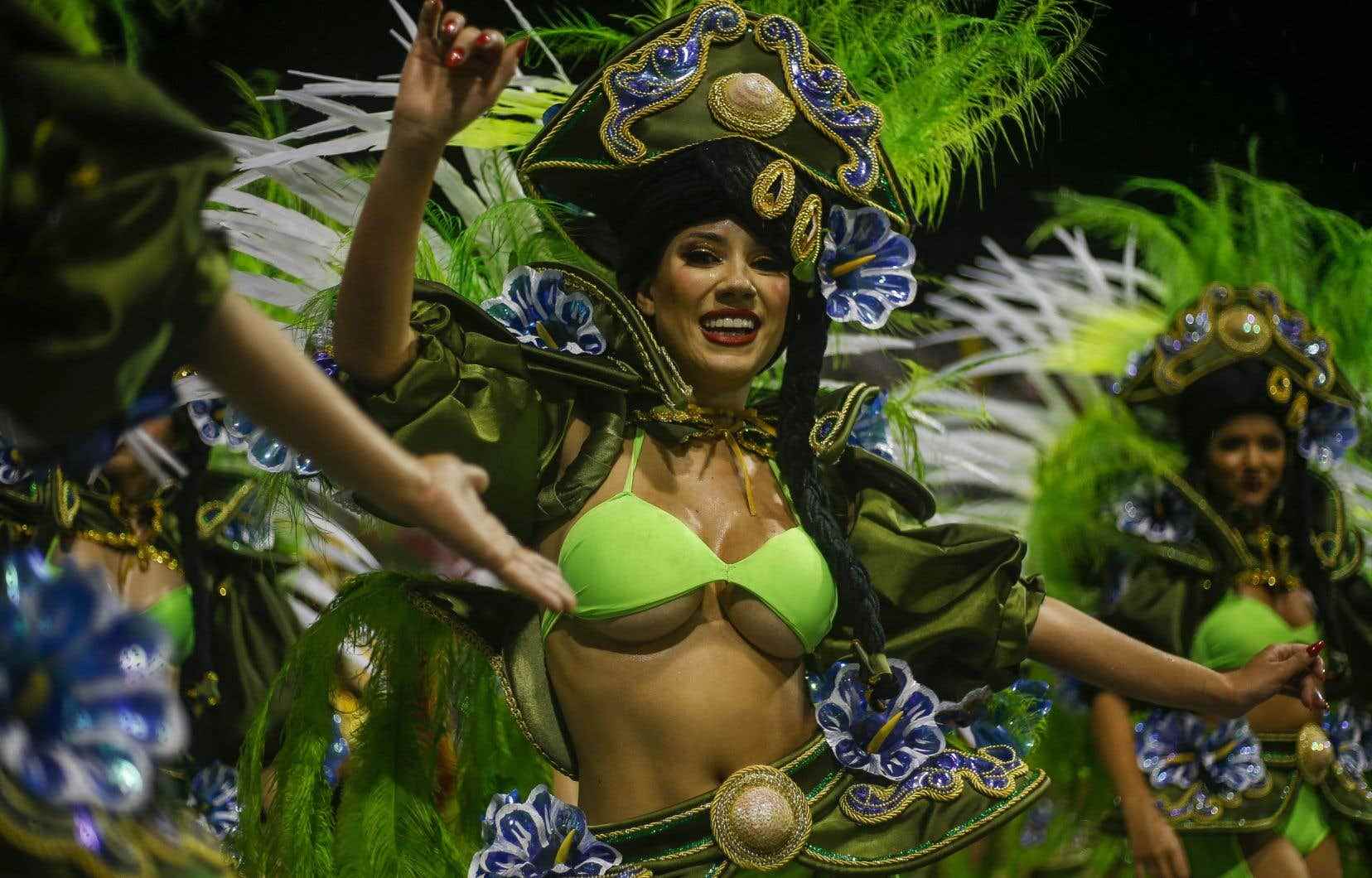The carnival fervor in Rio de Janeiro will reach its climax on Sunday evening: feathers and sequins will be out for the first of two nights of samba school parades, with their gigantic floats and shimmering costumes.
“The greatest show on earth”, according to the mayor of the “Marvellous City”, will begin at 10:00 p.m., in a jam-packed sambadrome with 70,000 jubilant spectators ready to vibrate to the sound of deafening percussion.
A breathtaking spectacle, which will also be watched by millions of viewers.
The Rio carnival is much more than a popular celebration, it’s a way of life.
Samba schools, mostly based in favelas, are the pride of an entire neighborhood. They prepare all year round for their big show, which can never exceed 70 minutes, on pain of deducting points from ruthless jurors.
The 12 main schools (six parade on Sunday, six others on Monday) are evaluated according to nine very specific criteria, including the quality of the floats, the costumes, the choice of theme or the choreography of the “comissao de frente”, a group of outstanding dancers who open the parade.
Each formation parades nearly 3,000 people on the Marquês de Sapucai avenue, an artery of about 700 meters surrounded by the imposing stands of the sambadrome.
After the cancellation of the 2021 edition and the postponement of last year’s to April due to the Covid, the 2023 vintage promises to be a return to the roots.
Samba under Lula
The first two schools to parade will pay tribute to key figures of samba.
Imperio Serrano, who opens the ball, chose to honor Arlindo Cruz, singer who suffered a serious stroke in 2017.
It will then be the turn of the reigning champion Grande Rio, who will retrace the life of Zeca Pagodinho, a very popular singer whose hit “Deixa a vida me levar (Let life lead me, Editor’s note)” had become the extra anthem -official of the national football team world champion in 2002.
Last year, Grande Rio won the coveted trophy for the first time in its history with a parade against religious intolerance.
This school in Duque de Caxias, a poor suburb north of Rio, had highlighted Exu, an Afro-Brazilian deity often demonized by the neo-Pentecostal churches, fervent supporters of the far-right ex-president Jair Bolsonaro.
But this year, the winds of politics have turned, with the return to power of left-wing icon Luiz Inacio Lula da Silva, who has promised to restore culture to its former glory after numerous budget cuts and censorship charges under the previous government.
The new Minister of Culture, Margareth Menezes, will parade with the last school to start at the sambadrome on the night of Sunday to Monday, Mangueira. This parade will show the richness of the carnival of Salvador de Bahia (north-east), cradle of Afro-Brazilian culture.
Mocidade and Unidos da Tijuca will also focus their parades on the culture of the poor regions of the Northeast, Lula’s electoral stronghold.
If the night in Rio is marked by the magic of the parades at the sambadrome, the early hours of the morning are punctuated by the musical processions of the “blocos” which enliven the streets of the city, some attracting hundreds of thousands of people, for an unbridled party where alcohol flows freely.
Enough to fill the coffers of traders: the town hall is counting on 4.5 billion reais injected into the local economy, with hotels 95% full.
